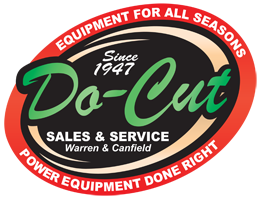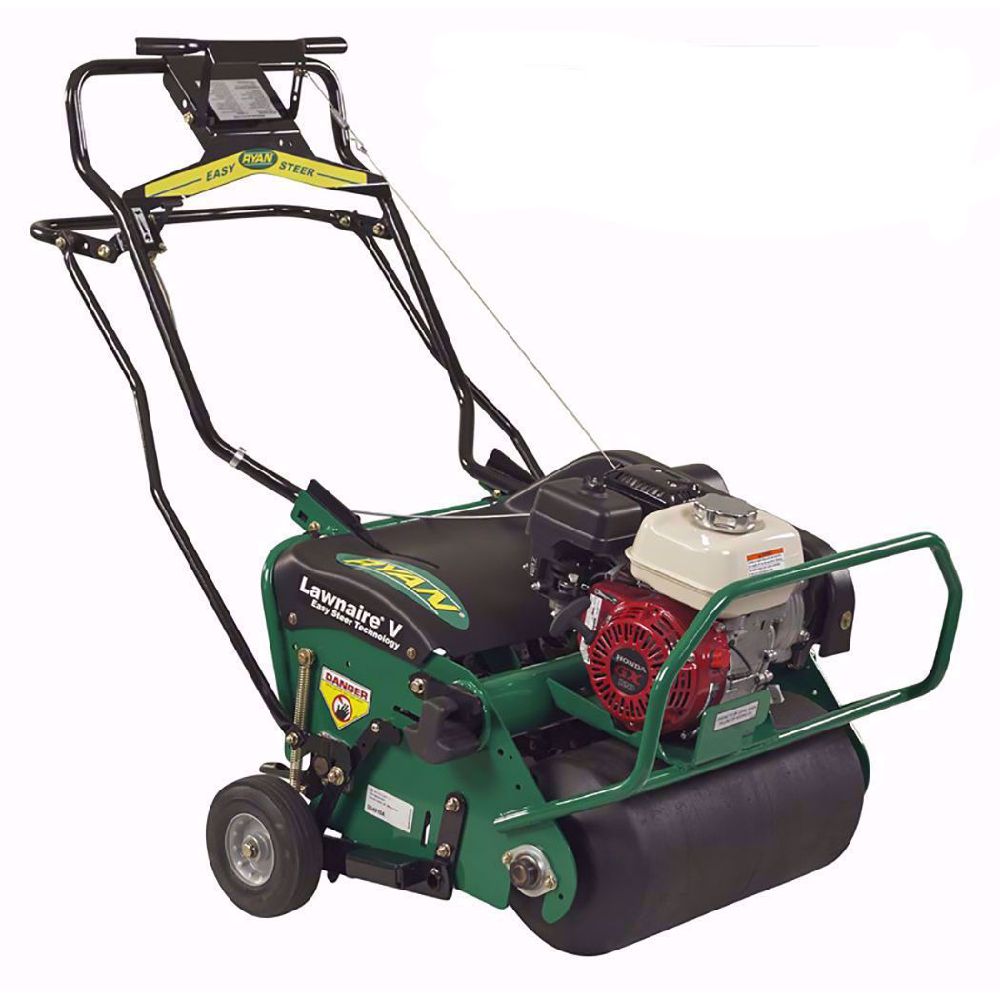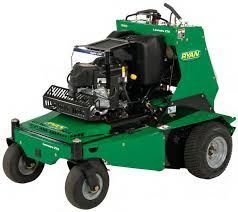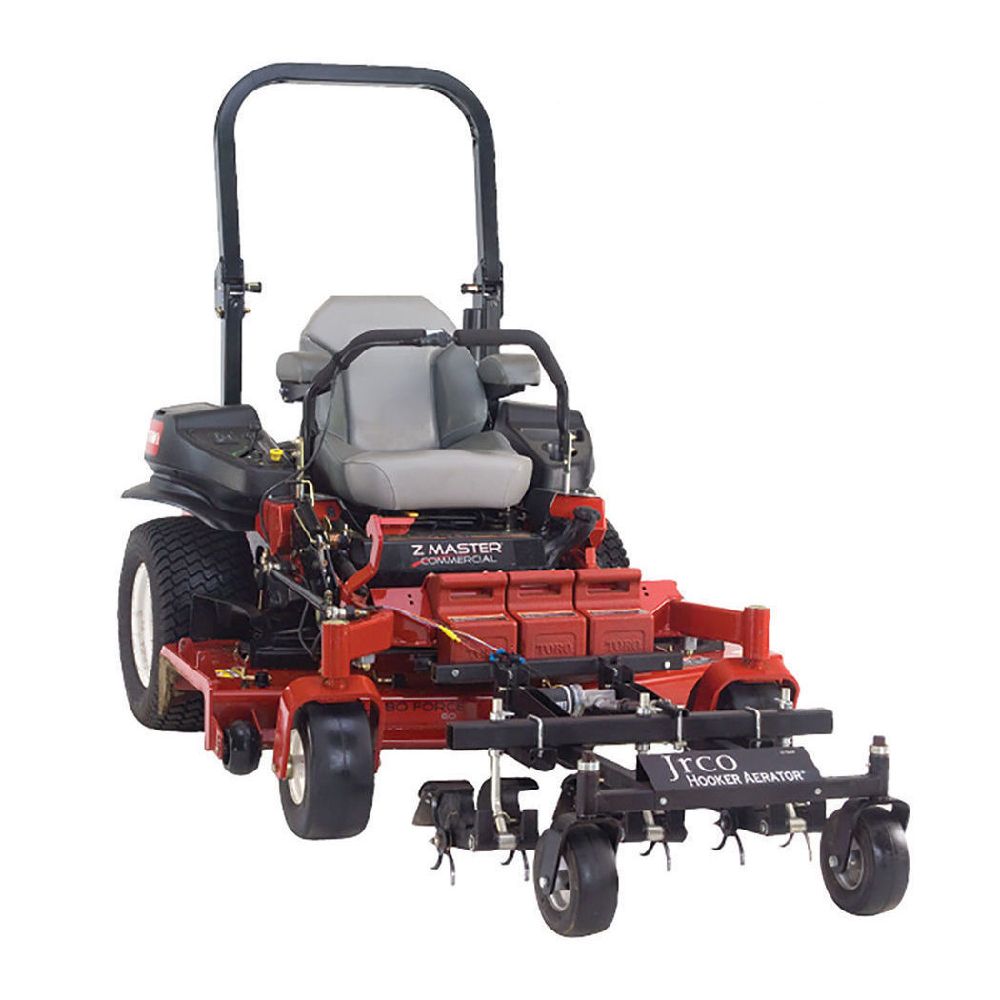Aerators
Do-Cut Sales & Service is all about lawns! We are a highly respected leader in the OPE industry and carry everything you need to create and maintain a beautiful landscaped yard. Do-Cut is a true one stop shop for all of your landscape equipment, parts and service needs!
Want a lush, thick, healthy lawn? Of course, we all do! Our backyard outdoor space is our own little private oasis. These areas are becoming extensions of our homes and highly valued when it comes to resale. A huge part of an outdoor space is not only a patio area, but also the surrounding yard. A beautiful, green, lush lawn will complement these areas and increase the resale value of any home.
Believe it or not, grass roots are rather shallow. They need air, water, and nutrients to grow thick, deep, and strong. Every lawn can benefit from annual or semi-annual aeration.
There are four basic types of aerators; Pitchforks, spiked aeration shoes, walk-behind aerators, and tow-behind aerators. There are two forms of aeration, spike, and core.
Great deals on aerators!
Shop online today at Do-Cut's Power Equipment Warehouse
Spike Aerators
- Spike aerators typically do not penetrate deeply into the ground because they do not remove any soil. Instead, soil is squeezed to all sides of the solid tines.
- Using a spike aerator only loosens soil and alleviates compaction short term, but it increases compaction in the long run. Spike aerators, like pitchforks or spiked aeration shoes are meant for very small areas less than 1,000 square feet in size.
- Rolling push spike aerators are also available but again used for smaller areas. For deeper penetration, be sure to add weight to this type of aerator.
- If you have a tractor or zero-turn mower, you may consider a tow-behind spike aerator. This type of aerator is best for larger yards, and you will definitely want to add weight to the top of this aerator, otherwise it will bounce and not do a thorough job.
Core Aerators
- The best way to aerate a yard is with a core aerator. Core aerators use rows of hollow tines that are mounted on a drum which rotate as you walk behind or tow it.
- A core aerator actually pulls out a core of the turf that is ¾ to 1 inch wide, and 3 to 4 inches deep. When using a core aerator, you are allowing air, nutrients, and water to penetrate into the root structure of your lawn.
- When grass is compacted, the roots try to flourish and your lawn will struggle to survive in stressful situations such as heat, and low rainfall. The grass will then lose its healthy, rich color. At this point, without using an aerator, the grass will become thin and eventually die from lack of oxygen, water, and nutrients. Every time you use an aerator you are opening the ground to allow these essential elements to reach the roots. your lawn can bounce back to life after one aerator session.
- If your grass looks stressed, the soil is hard to the touch, and rainwater puddles up where it used to be absorbed, it’s time to use an aerator. If you can barely push a screwdriver into the soil, your soil is compacted, and you need to use an aerator.
- It is best to use an aerator right before your yard reaches the prime growing season. Never use an aerator on a dormant yard. In more northern areas, it is best to aerate in early fall and early spring. In southern areas it is best to aerate in late spring or very early summer. Aerate when the soil is moist from irrigation or rainfall. Aerating on overly dry soil will make the job much more difficult. Never aerate on an overly saturated lawn; wait a few days until it dries.
- Before aerating, be sure to walk your lawn and mark sprinkler heads, invisible fence wire, autonomous mower wire or any other obstacles that cannot be cut by the core aerator using marking flags or chalk. Rake or blow any fallen leaves off of the turf before using the aerator.
- Typically, you should aerate in opposite directions, to maximize the number of holes so that air and nutrients can enter the soil. Leave the cores (soil plugs) on the yard because they will return nutrients to the soil as they decompose. After aerating, you can fertilize or apply a top dressing of compost to your lawn. It’s also a great time to re-seed any bare patches. Core aeration, fertilization and over seeding will put your lawn back on the fast track for lush growth. You can return to your regular watering and mowing schedule right after aeration.
- Using an aerator also helps to remove thatch, which is the surface buildup of dead grass and organic material that settles between the actively growing layer of turfgrass and the soil surface. Thatch will choke your lawn, but an aerator can fix that problem.
- It is best to use a lawn aerator twice a year. A core aerator will even help settle areas of a lawn that are rolling and seem higher than others. By taking a core/plug of turf, you allow the earth to spread and settle to become more level.
A core aerator will enhance the root structure of your lawn. A healthy lawn is more resistant to weeds, invasive insects, rodents, and poor weather patterns.
Do-Cut Sales & Service is your aerator headquarters. We carry everything you need and the expertise to guide you to purchasing the correct aerator for your needs.
Come shop our selection of aerators at our stores in Canfield and Warren, Ohio.
We have supplied the wonderful people of the Mahoning Valley for more than 75 years! Our products, customer service, expertise and prices will surely win you over!




